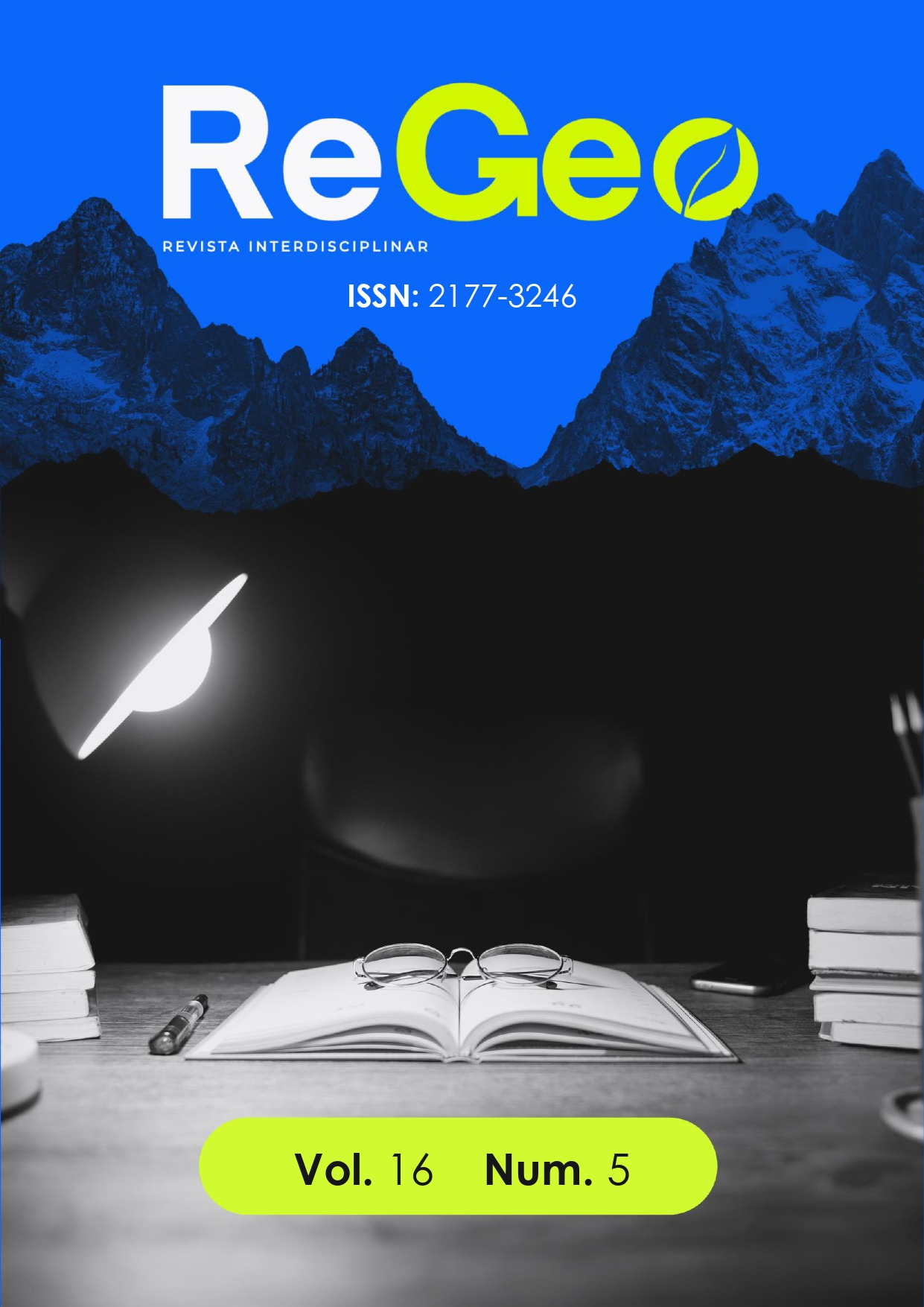AUTOMATIC TATTOO RECOGNITION: APPLICATION IN THE FORENSIC FIELD
DOI:
https://doi.org/10.56238/revgeov16n5-044Keywords:
SIFT, YOLO, SURF, Tattoo, RecognitionAbstract
This work presents a system for the automatic recognition of tattoo images within a database, which can be used to assist in the accurate identification of criminals who bear such body marks, their meanings, and the possible identification of criminal factions to which they may belong. The techniques for parameter extraction and image recognition are based on the Scale Invariant Feature Transform (SIFT) algorithm, the Speeded-Up Robust Features (SURF) algorithm, and the YOLO neural network. The study describes the test cases that must be followed, which will allow for consistent performance comparison of tattoo recognition methods. The results showed good performance of the SIFT algorithm (88.65%) compared to the other methods analyzed.
Downloads
References
ACTON, S. T.; ROSSI, A. Matching and retrieval of tattoo images: Active contour CBIR and glocal image features. In: 2008 IEEE Southwest Symposium on Image Analysis and Interpretation. IEEE, 2008. p. 21–24. DOI: https://doi.org/10.1109/SSIAI.2008.4512275.
ALLEN, J. D.; ZHAO, N.; YUAN, J.; LIU, X. Unsupervised tattoo segmentation combining bottom-up and top-down cues. In: SPIE 8063: Mobile Multimedia/Image Processing, Security, and Applications. 2011. DOI: https://doi.org/10.1117/12.884368.
ANANDHASILAMBARASAN, D. et al. SIFT and SURF: A Comparative Analysis of Feature Extraction Methods for Image Matching. In: 15th International Conference on Computing Communication and Networking Technologies (ICCCNT), 2024, Kamand. Proceedings. Kamand: IEEE, 2024. p. 1–6. DOI: https://doi.org/10.1109/ICCCNT61001.2024.10726049.
ANSI/NIST-ITL 1-2011. Update 2016. NIST Special Publication 500-290e3: Data Format for the Interchange of Fingerprint, Facial & Other Biometric Information. National Institute of Standards and Technology, 2015. DOI: https://doi.org/10.6028/NIST.SP.500-290e3.
BAY, H.; TUYTELAARS, T.; VAN GOOL, L. SURF: Speeded up robust features. In: European Conference on Computer Vision – ECCV. 2006. p. 404–417. DOI: https://doi.org/10.1007/11744023_32.
BEAUTHIER, J. P.; LEFEVRE, P.; VALCK, E. D. Autopsy and identification techniques. In: MÖRNER, N.-A. (ed.). The Tsunami Threat – Research and Technology. London: InTech, 2011. DOI: https://doi.org/10.5772/13610.
BILIK, S.; HORAK, K. SIFT and SURF based feature extraction for the anomaly detection. In: Proceedings I of the 28th Conference STUDENT EEICT 2022. Brno, 2022. p. 459–464. ISBN 978-80-214-6029-4. DOI: https://doi.org/10.48550/arXiv.2203.13068.
DI, X.; PATEL, V. M. Deep Tattoo Recognition. In: IEEE Conference on Computer Vision and Pattern Recognition Workshops (CVPRW), 2016, Las Vegas. Proceedings. Las Vegas: IEEE, 2016. p. 119–126. DOI: https://doi.org/10.1109/CVPRW.2016.22.
DUANGPHASUK, P.; KURUTACH, W. Tattoo skin detection and segmentation using image negative method. In: 13th International Symposium on Communications and Information Technologies. IEEE, 2013. p. 354–359. DOI: https://doi.org/10.1109/ISCIT.2013.6645881.
FILIPAKIS, G.; FAGUNDES, F. Uma proposta de utilização de Redes Neurais na criação de sequências didáticas baseadas no padrão SCORM. In: XXIII Congresso de Computação e Tecnologias da Informação – Encoinfo. Palmas, 2021. Disponível em: https://www.researchgate.net/publication/356223762. Acesso em: 13 mar. 2022.
GROSSO, E. L. A tecnologia à disposição da Polícia Judiciária. [S.l.]: Conteúdo Jurídico, 2012. Disponível em: http://www.conteudojuridico.com.br/consulta/Artigos/27992. Acesso em: 13 mar. 2022.
HEFLIN, B.; SCHEIRER, W. J.; BOULT, T. E. Detecting and classifying scars, marks, and tattoos found in the wild. In: BTAS ’12: IEEE Sixth International Conference on Biometrics: Theory, Applications and Systems. IEEE, 2012. p. 31–38. DOI: https://doi.org/10.1109/BTAS.2012.6374555.
JAIN, A. K.; LEE, J. E.; JIN, R. Tattoo-ID: automatic tattoo image retrieval for suspect and victim identification. In: Pacific-Rim Conference on Multimedia (PCM ’07). 2007. DOI: https://doi.org/10.1007/978-3-540-77255-2_28.
JUAN, L.; GWUN, O. A comparison of SIFT, PCA-SIFT and SURF. International Journal of Image Processing (IJIP), v. 3, n. 4, p. 143–152, 2009. Disponível em: https://www.cscjournals.org/manuscript/Journals/IJIP/Volume3/Issue4/IJIP-51.pdf. Acesso em: 13 mar. 2022.
LORDELO, J. O significado das tatuagens no mundo do crime e nos presídios. Lordelo Treinamento, 2018. Disponível em: https://lordellotreinamento.com.br/2018/03/05/o-significado-das-tatuagens-no-mundo-do-crime-e-nos-presidios/. Acesso em: 10 jan. 2022.
LOWE, D. G. Distinctive image features from scale-invariant keypoints. International Journal of Computer Vision, v. 60, n. 2, p. 91–110, 2004. DOI: https://doi.org/10.1023/B:VISI.0000029664.99615.94.
MANGER, D. Large-scale tattoo image retrieval. In: Conference on Computer and Robot Vision. IEEE, 2012. p. 454–459. Disponível em: https://publicarest.fraunhofer.de/server/api/core/bitstreams/76604e42-93cc-482a-a113-2fea0171218a/content. Acesso em: 10 jan. 2022.
MUSCI, M. et al. Drones and Sustainability: How Technology Can Assist in the Automatic Detection of Waste. In Hard-to-Access Areas. Revista De Gestão - RGSA, 18(9), e07235. 2024a. DOI: https://doi.org/10.24857/rgsa.v18n9-109.
MUSCI, M. et al. Inteligência artificial e sensoriamento remoto com o uso de vants: uma aplicação na detecção automática de resíduos sólidos urbanos. In: dos Santos, A. F. et al. (Org.). Sustentabilidade e meio ambiente - Inovação e responsabilidade. 1ed.Ponta Grossa: Atena Editora, 2024b, v. 1, p. 81-97. DOI: https://doi.org/10.22533/at.ed.718242712.
MUSCI, M. et al. Uso do algoritmo SIFT para reconhecimento automático de tatuagens. Aracê - Direitos Humanos em Revista, v. 7, p. 10988-11000, 2025. DOI: https://doi.org/10.56238/arev7n3-053.
POCEVIČĖ, G.; STEFANOVIČ, P.; RAMANAUSKAITĖ, S.; PAVLOV, E. Approach for Tattoo Detection and Identification Based on YOLOv5 and Similarity Distance. Applied Sciences, v. 14, n. 13, p. 5576, 2024. DOI: https://doi.org/10.3390/app14135576.
REDMON, J.; FARHADI, A. YOLO9000: Better, Faster, Stronger. In: IEEE Conference on Computer Vision and Pattern Recognition (CVPR), 2017, Honolulu. Proceedings. Honolulu: IEEE, 2017. p. 6517–6525. DOI: https://doi.org/10.1109/CVPR.2017.690.
SILVA, R. T.; LOPES, H. S. A Transfer Learning Approach for the Tattoo Detection Problem. In: XV Brazilian Congress of Computational Intelligence (SBIC), Online, 3–6 Oct. 2021. DOI: https://doi.org/10.21528/CBIC2021-34.
SUN, Z. H. et al. Tattoo detection and localization using region-based deep learning. In: 23rd International Conference on Pattern Recognition (ICPR), 2016, Cancun. Proceedings. Cancun: IEEE, 2016. p. 3055–3060. DOI: https://doi.org/10.1109/ICPR.2016.7900103.


